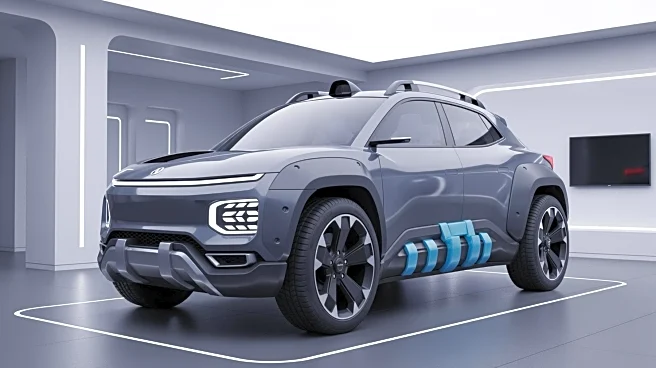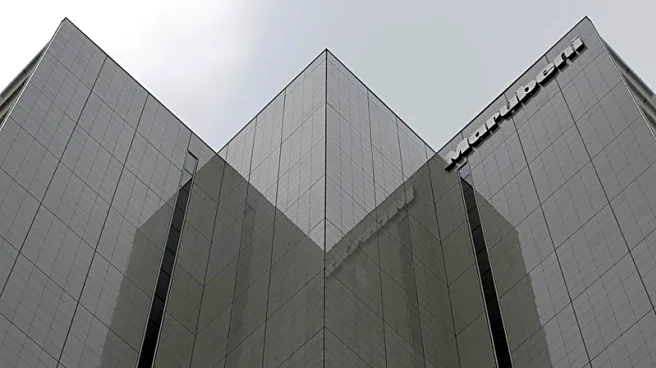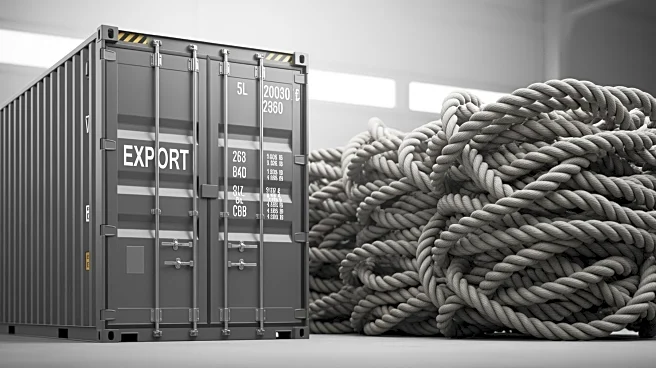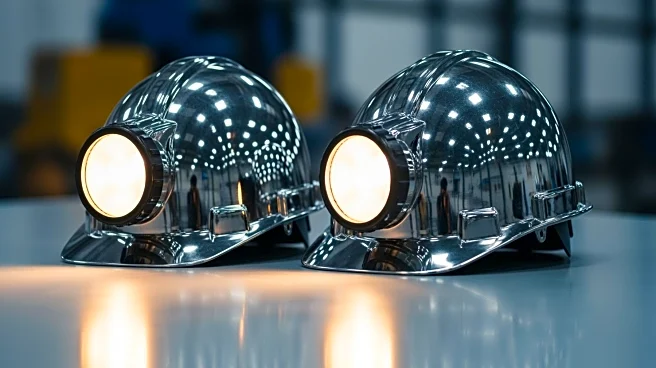What's Happening?
Toyota has introduced the ninth generation of its Hilux pickup truck, featuring significant design and powertrain upgrades. The new model, dubbed 'Cyber Sumo,' includes a redesigned interior inspired by the Land Cruiser and rides on a strengthened ladder-frame
chassis. It offers a variety of powertrain options, including diesel, gasoline, mild-hybrid, battery electric vehicle (BEV), and a future hydrogen fuel cell electric vehicle (FCEV). The Hilux will first launch in Europe and Australia, followed by Asia and Japan. Notably, the new Hilux includes a fully electric version for the first time, with dual electric motors and a 59.2 kWh battery pack. The vehicle maintains its robust payload and towing capacities, although the electric version has slightly reduced capabilities due to the heavier battery setup.
Why It's Important?
The introduction of a fully electric Hilux marks a significant step in Toyota's strategy to diversify its powertrain offerings and meet global demand for more sustainable vehicles. This move aligns with the growing trend towards electrification in the automotive industry, driven by environmental concerns and regulatory pressures. The Hilux's new design and expanded safety features enhance its appeal in competitive markets, particularly where utility and reliability are key selling points. The electric variant could attract new customers interested in zero-emission vehicles, potentially increasing Toyota's market share in regions where electric vehicles are gaining popularity.
What's Next?
Toyota plans to roll out the new Hilux in various global markets, starting with Europe and Australia in December 2025, followed by broader Asian rollouts in 2026 and a debut in Japan by mid-2026. Detailed specifications and pricing will be announced closer to the launch dates. The company is also planning to introduce a hydrogen fuel-cell variant by 2028, which could further enhance its sustainability credentials and appeal to environmentally conscious consumers.
Beyond the Headlines
The Hilux's new design and powertrain options reflect Toyota's commitment to innovation and adaptability in a rapidly changing automotive landscape. The inclusion of advanced driver-assistance systems aligns with industry trends towards increased vehicle safety and automation. The Hilux's continued reliance on a ladder-frame chassis, rather than transitioning to more modern architectures, suggests a focus on maintaining durability and off-road capabilities, which are crucial for its target markets.














